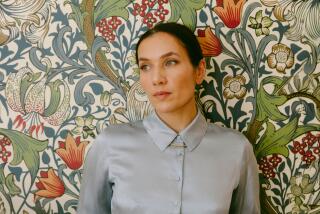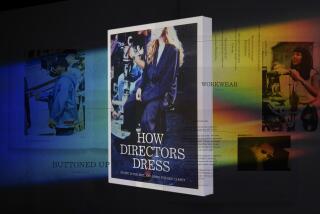Her Closet Speaks Volumes
- Share via
Fashion meets fiction in the novels of Judith Krantz, the best-selling author of “Scruples,” “Princess Daisy” and “Spring Collection,” her latest about three rookie models living in Paris. “Clothes are symptomatic of a heroine’s state of mind,” Krantz says. “The way she dresses is part of her psychological makeup. And in real life, I think women dress from the inside out, as it were. I always wonder what makes people choose the clothes they do,” she says.
Krantz appears to live the life of one of her heroines--in a chintz-filled mansion in Bel-Air. She sets her table with Limoges china, works at her computer in a silk shirt and impeccable sweatpants, and fills crystal vases with flowers plucked from her garden. But she hasn’t always: Krantz began her career in New York as a fashion editor at Good Housekeeping, where she learned a lot about dressing on a budget. Today, with 75 million copies of her books in print, she can afford the best, but she still shops with a critical eye. Krantz, 66, invited us in for a peek at her closet, a walk-in the size of a small bedroom.
“I expect my wardrobe to work for me,” she says, gesturing at a rack of Chanel jackets in every shade of the rainbow (lavender, yellow, pink, celadon, tangerine, green, black, red and navy). “I wouldn’t have so many if I didn’t need to promote my books on TV and in person,” she says. Solid bright colors tend to look good on camera; black and pastels don’t. “I remember doing the ‘Sonya Live’ show,” Krantz says, “and I sat down on a pink couch wearing a pink suit, and with my blond hair, I disappeared. . . . I was invisible.”
Every jacket tells a story. Krantz is wearing one in beige and lavender wool plaid (with a beige quilted satin lining) over beige pants. “I first wore this to a fund-raiser for Michael Dukakis. It came with a beige satin shirtwaist dress, which is long gone. Dukakis is long gone. But the jacket’s still here!” It looks as if it were bought yesterday. “That’s the reason I wear Chanel, it doesn’t go out of style,” Krantz says. “If I bought clothes that were of-the-moment fashionable, then next year they would look wrong on me.”
To the left of her jackets hang about 10 black skirts in varying styles and fabrics--daytime wool, evening velvet, bias-cut chiffon, pleated wool crepe. “Mix and match is my middle name,” says the author, who never buys matched suits and might dress up a jacket for cocktails with a chiffon skirt, diamond earrings (purchased when “Scruples” topped the bestseller list) and a black silk camellia pinned to her lapel. (Her collection of silk flowers nests in a shallow drawer like precious botanical specimens.) Her way with accessories obviates the need for a lot of evening clothes. “And I only have one dress,” she says, referring to her latest buy, a pink-and-white, double-breasted coat dress from Chanel.
She likes to buy separates, so apt for warm days, cool nights and air conditioning. “It took me years to learn how to dress in California,” says Krantz, who moved here with her film-producer husband, Steve, in the ‘70s. “Everybody said, ‘Just wear jeans.’ Well, I’ve never found a pair of jeans in my life that fit me. They’re too tight in one place and too baggy in another.”
The same applies to slacks. “I cannot find ready-made pants because I’m long-legged but short,” she says. “So I found a tailor in Beverly Hills, Harrison de Castenau, who makes pants to order.” (In beige, white or black, to go with her Chanel jackets.)
Chanel is a small woman’s best friend, Krantz has learned. She’s been wearing the line since 1983. “The suits have gone up in price but they haven’t changed in quality,” she says.
Her knowledge of other designers sometimes helps her characters. In “Spring Collection,” a model booking agent in need of a make-over is dressed by her boss in Donna Karan. “She needed to look pulled-together and grown-up, and Donna Karan gives you a complete image,” Krantz says.
Krantz views her clothes as investments, the only way she can justify spending $3,200 for a jacket and skirt. “If you only buy three or four things a year that last forever, you have a lifetime of clothes,” she says.






